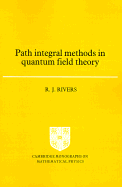Book contents
- Frontmatter
- Contents
- Preface
- 1 Scalar Green functions and their perturbative solutions
- 2 Connected Green functions and their one-particle irreducible components
- 3 Regularisation and renormalisation
- 4 The scalar functional integral
- 5 Series expansions and their summation
- 6 Taking the path integral more seriously
- 7 Quantum theory on non-simply-connected configuration spaces
- 8 Stochastic quantisation
- 9 Fermions
- 10 Quantum electrodynamics
- 11 Non-Abelian gauge theories
- 12 Explicit symmetry breaking and its classical limit
- 13 The effective potential
- 14 Field theory at non-zero temperature
- 15 Field theory at non-zero temperature: real-time formulation
- 16 Instantons
- 17 Composite fields and the large-N limit
- References
- Index
3 - Regularisation and renormalisation
Published online by Cambridge University Press: 04 April 2011
- Frontmatter
- Contents
- Preface
- 1 Scalar Green functions and their perturbative solutions
- 2 Connected Green functions and their one-particle irreducible components
- 3 Regularisation and renormalisation
- 4 The scalar functional integral
- 5 Series expansions and their summation
- 6 Taking the path integral more seriously
- 7 Quantum theory on non-simply-connected configuration spaces
- 8 Stochastic quantisation
- 9 Fermions
- 10 Quantum electrodynamics
- 11 Non-Abelian gauge theories
- 12 Explicit symmetry breaking and its classical limit
- 13 The effective potential
- 14 Field theory at non-zero temperature
- 15 Field theory at non-zero temperature: real-time formulation
- 16 Instantons
- 17 Composite fields and the large-N limit
- References
- Index
Summary
So far everything has been extremely formal, a euphemism for the fact that almost any diagram that we write down will be represented by an integral that does not exist. This is because products of the distributions ΔF with coincident space-time points are not defined. Moreover, the presence of singularities arising from such formal products is not peculiar to the scalar theories that we have considered so far, but to all local field theories.
Before considering tactics for handling this problem there is a question of philosophy. One fact that has been hammered home by models that unify the different forces of nature is that, in each step towards a common unity, a new and yet higher mass scale is introduced. With each breakthrough in our understanding the ‘best’ current model has been seen to be a ‘low’-energy effective model for a yet more complete theory that contains it as a subsector. Further, a field that is ‘elementary’ at one level may be composite (e.g. a bound state of new elementary fields) at the next.
It is true that models giving rise to unavoidable infinities may still permit useful calculations at ‘tree’ level (e.g. the four-Fermi model of weak interactions). Nonetheless, the desire for a consistent theory with no infinities at each step has been a crucial force in model-making.
- Type
- Chapter
- Information
- Path Integral Methods in Quantum Field Theory , pp. 41 - 56Publisher: Cambridge University PressPrint publication year: 1987

